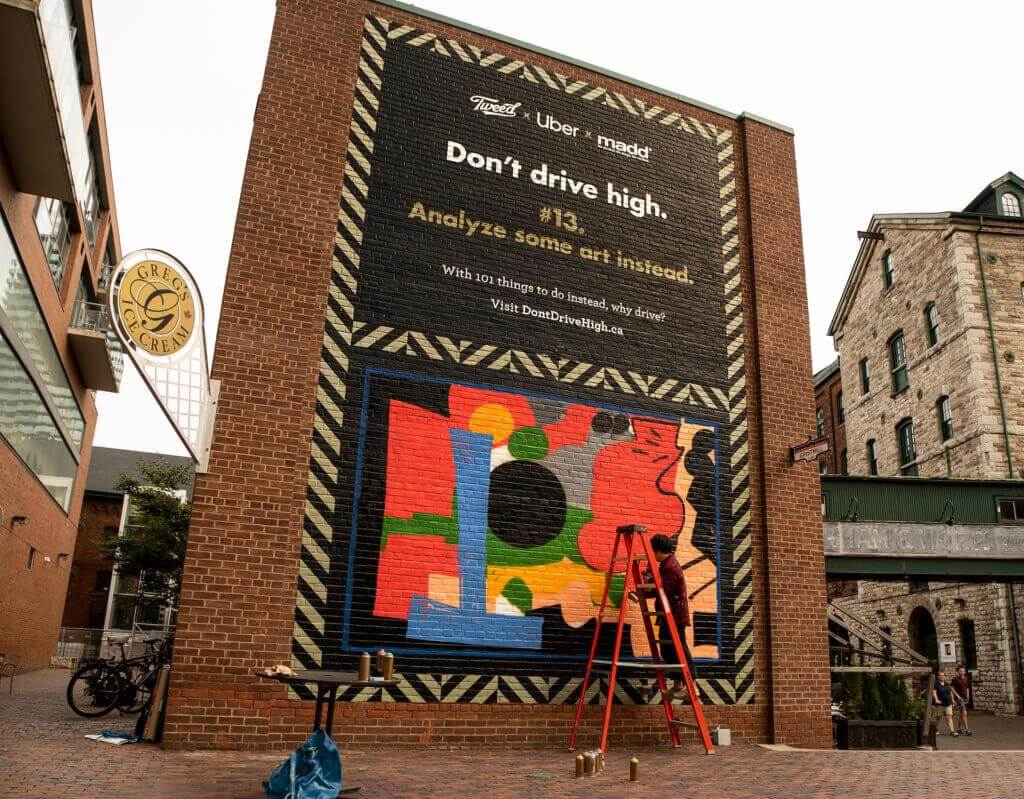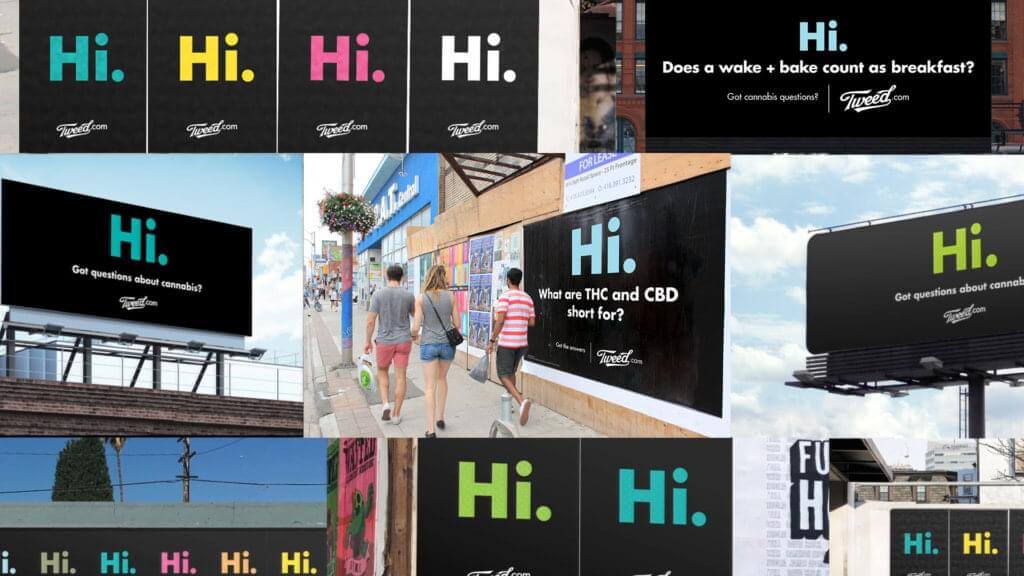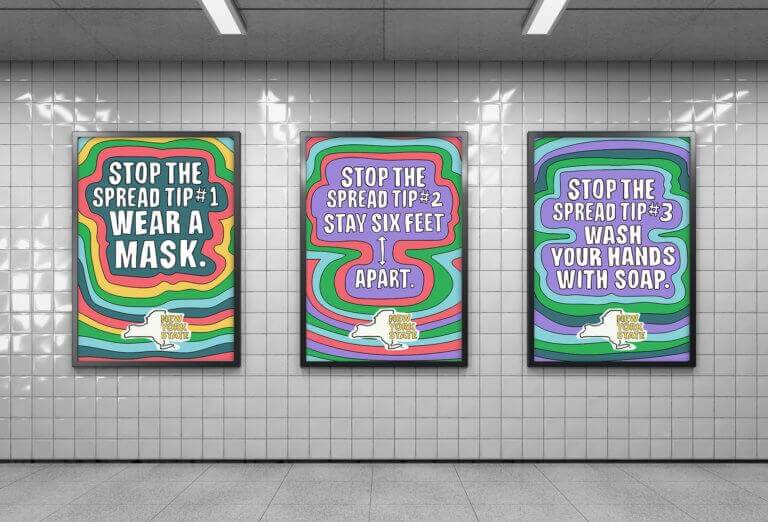
The role that OOH advertising plays in our society not only benefits brands and companies who are looking to sell something, they also benefit organizations and NGOS looking to help people. The OOH industry oftentimes provides free advertising space, or at the very least a reduced cost, for charitable causes and calls-to-action. According to the Out of Home Advertising Association of America (OAAA), the OOH industry donates over $500 million a year to local and national non-profit groups that want to display public service announcements (PSAs). OOH advertising provides a platform for public services, such as Red Cross, the FBI, the Police Department, Mothers Against Drunk Driving (MADD), and the Center for Disease Control and Prevention (CDC). In doing so, these services and their messages will be seen and heard by thousands in a big, bold, and unmistakable way. Let’s take a look at how OOH has helped get the word out on some extremely important issues.
Spreading the word NOT the virus
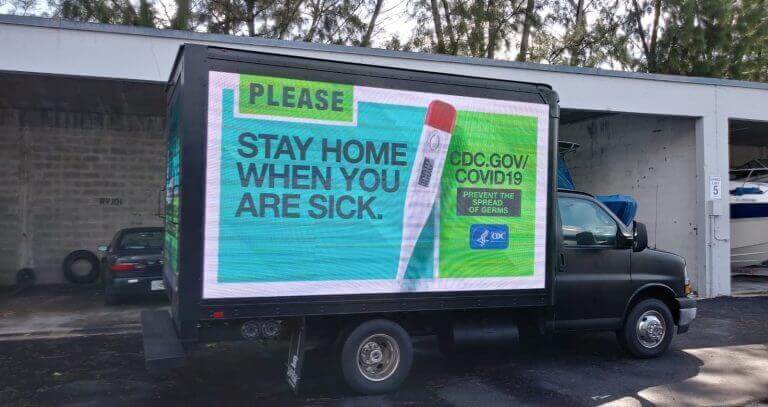
While OOH advertising can be used to promote fun and exciting new brands, it can also serve as an emergency response medium. Over the past few months, the COVID-19 Pandemic has swept the globe, creating a world-wide shutdown. In the aftermath, OAAA partnered with the CDC to create digital PSAs on a variety of digital OOH (DOOH) platforms. The various signage currently delivers unified messages like, “staying home saves lives,” and “wash hands often with soap & water for at least 20 sec,” which are in support of the safety goals set by health professionals across America. The ads have been downloaded over 500 times and are live on more than 7,000 DOOH screens. Many of the DOOH signs also include the hashtag, “#AloneTogether,” which reinforces the idea that by staying apart and in our own homes, we’re working together to beat COVID-19. Not only does this kind of public service messaging spread awareness about the virus, but it also provides people with a sense of community and a collective sense of hope.
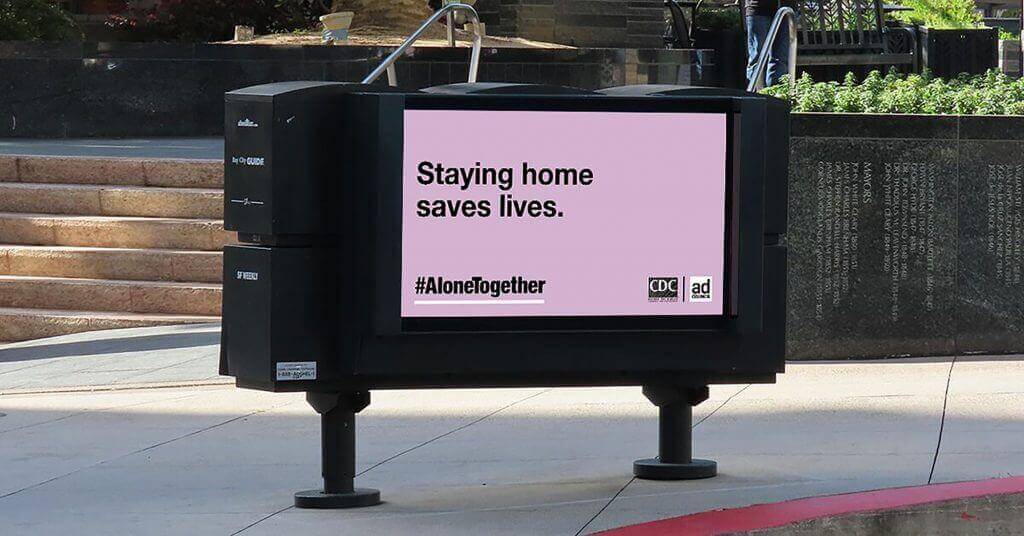
The DOOH company, Intersection, has created another great feature for people to stay informed during the Pandemic. They have put up thousands of LinkNYC screens across New York City that display digital prevention tips, closures, restrictions, and resources. Working alongside the City of New York, Intersection has created messages that change depending on news updates – providing people with the information they need about COVID-19, as it happens.

Similarly, countries all over the world have been using OOH to spread the word about the Coronavirus. The Department of Health & Social Care in the UK launched, what they called, a “public information blitz” that provided people with information on how to prevent the contraction of the virus. The same type of campaign was created in Australia backed by the Australian Government.
All in all, the more that people are aware of the risks, the safety precautions, and updates on protocol, the better off we will all be during these extremely uncertain times. The best way that these PSAs can be spread is through OOH advertising because it can reach thousands (if not millions) of people in a short amount of time and can change at a moments notice.
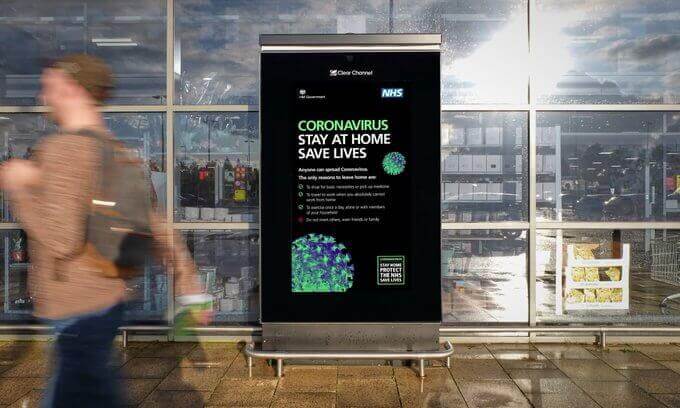
Legalization of marijuana and OOH
In June of 2018, recreational marijuana became legal in Canada and has become legal in specific States across America. Due to its infancy and because it is a mind-altering drug, there are extremely strict rules and regulations that come along with advertising it. That’s why a lot of OOH advertisements about marijuana, along with other mediums, do not promote the use of marijuana, but instead, promote the brand that sells it, provide information on how to use it, and give safety tips for those who try it.
Prior to the legalization of marijauna in Canada, Tweed, a high-quality cannabis company, launched the “Hi.” Campaign. Partnering up with the ad company, Cossette and Mothers Against Drunk Driving (MADD), Tweed created a multi-faceted PSA using OOH, online videos, mobile ads, and more. The campaign aimed to familiarize Canadians with the different streams of cannabis and urged consumers not to drive high. The campaign generated over 700 million media impressions and led 34,000 people to sign up for Tweed’s newsletter. Not only was the campaign meant to raise awareness, but also to establish Tweed as a trusted cannabis brand and create consumer loyalty prior to its store opening.
As mentioned earlier, marijuana is not legal everywhere in the United States – only in select states. The specific states that render marijuana legal, have allowed for the production and promotion of the drug — which, in turn, has led to some extremely popular and informative OOH advertisements. The American cannabis dispensary brand called MedMen, created a “#forgetstoner” PSA campaign, which challenged prejudices surrounding the term “stoner” and the use of marijuana. The campaign used OOH advertising to display a diverse group of people with differing professions as marijuana users, but aren’t defined by the stereotypical “stoner” characteristics. This campaign amplified MedMen’s engagement well above their competitors, making them the number one cannabis dispensary in the country.
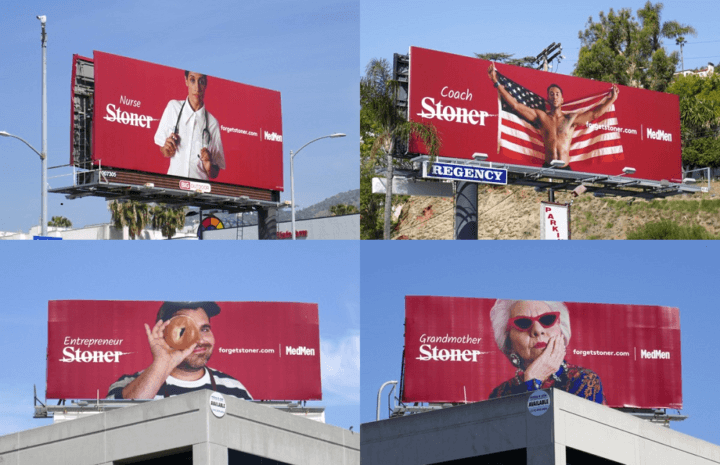
Don’t drink and drive
Driving while impaired has been an extremely huge problem in Canada. According to Mothers Against Drunk Driving (MADD), on average, up to 4 Canadians are killed every day and many more are injured in alcohol-related motor vehicle crashes. This number is far, far too high. That’s why MADD, a registered Canadian Charitable Organization, was created. The organization set out to stop impaired driving completely and to support the victims of this violent crime. One of the many ways that they do this, is through PSAs on OOH advertisements. One example was their collaboration with Uber that highlighted the reasons why you shouldn’t drive drunk and provided all the different options that are available besides driving — including taking an Uber.
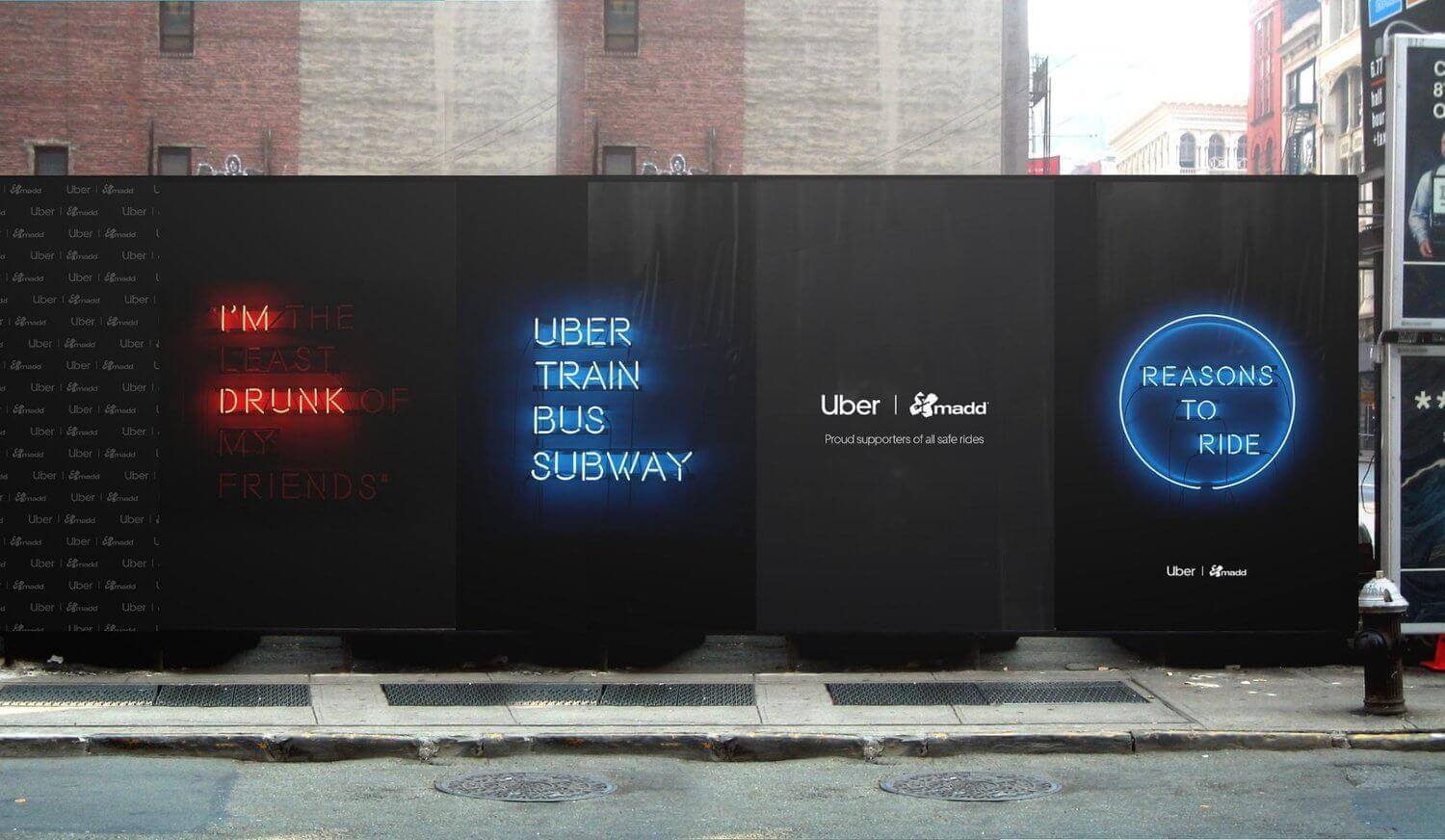
Other countries like India, also take drunk driving very seriously. A cab service in New Delhi called Ola, partnered with BarTalk, a DOOH ad agency, to create a PSA about the condemnation of drinking and driving. They placed over 150 digital OOH displays across the capital of New Delhi — making sure to position them near bars and clubs. The DOOH screens urged customers to take an Ola cab home and displayed real-time bar offers and discounts on cabs. This PSA campaign not only spread awareness about the perils of driving while impaired, but also promoted safe driving habits with enticing discounts.
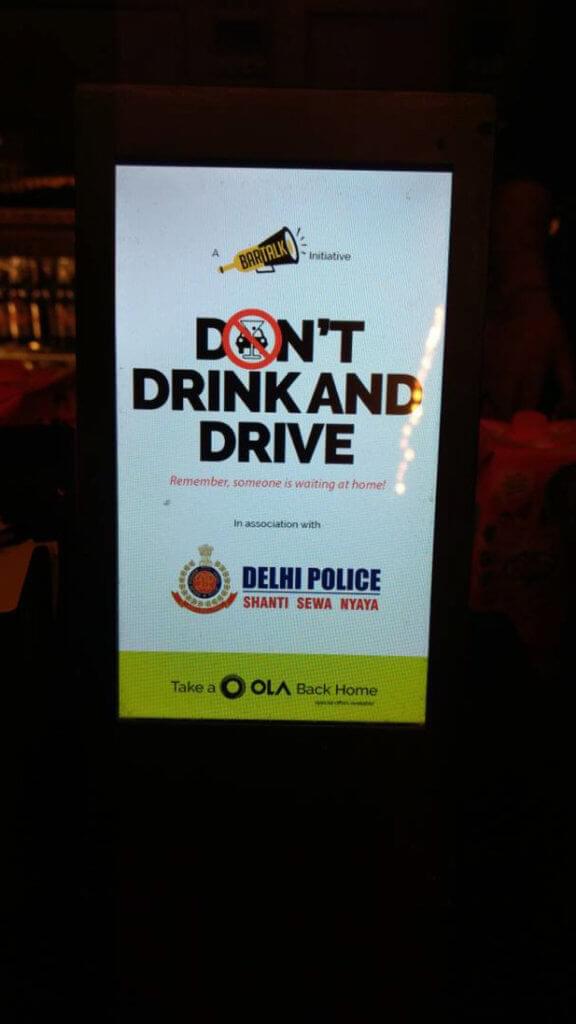
The importance of domestic violence PSAs
One major way that domestic violence can be recognized, prevented, and hopefully reported, is through OOH advertising. According to a Econsultancy article, a UK marketing company, domestic violence will affect 1 in 4 women in their lifetime. In an attempt to reduce this number significantly, Women’s Aid, a grassroots federation that works to prevent domestic abuse, launched a major digital OOH campaign. Women’s aid worked alongside Ocean’s billboards to create a massive digital OOH billboard that used facial recognition cameras to track how many people looked up at the ad. The billboard displayed a woman’s face that had been beaten very badly. As passers-by looked up at the screen, the facial recognition tech would be triggered and the woman’s face would begin to heal. To ensure the attention of onlookers even more, Women’s Aid would send a push notification using the Daily Mirror app so that anyone walking by the billboard would be sent a message telling them to look up. The analytics show that roughly 327 million people stopped and looked at the ad. By using OOH, this amazing PSA not only worked to raise awareness about preventing domestic violence, but also illustrated the collective responsibility that our society should be taking in aiding this prevention.
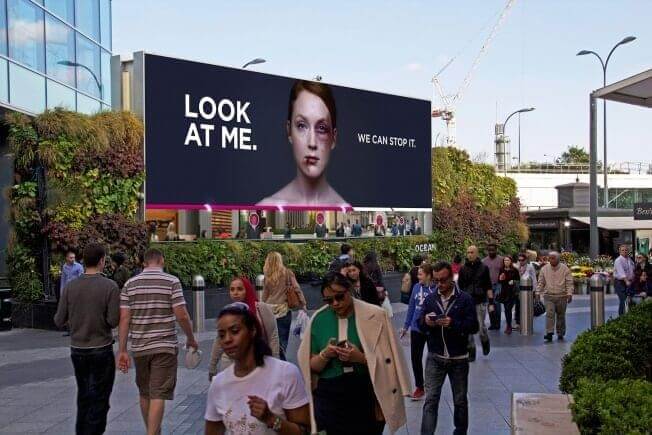
Wrap up
All in all, in order to garner the attention of a lot of people at a fast rate, OOH advertising is the way to go. Especially when promoting something like a PSA. Oftentimes, especially in today’s society, awareness of societal issues go unnoticed or are disregarded. By using OOH advertising, these issues are suddenly (and boldly) brought to the forefront for everyone to recognize, understand, and hopefully, do something about. OOH also makes it extremely easy for organizations to promote and adapt their PSA messaging because it is both cheap compared to other advertising mediums and is the most engaging. So, definitely consider OOH advertising when looking to create your next PSA — you really can’t go wrong.


